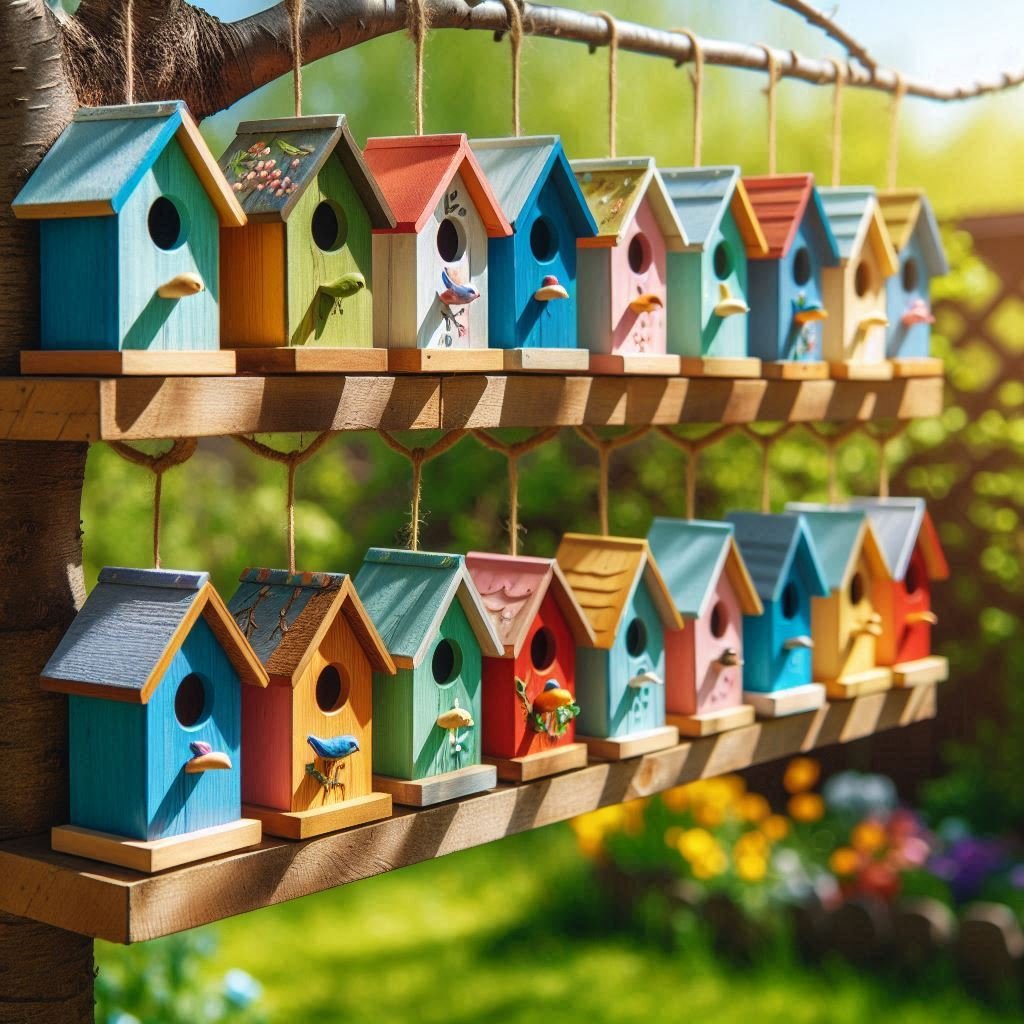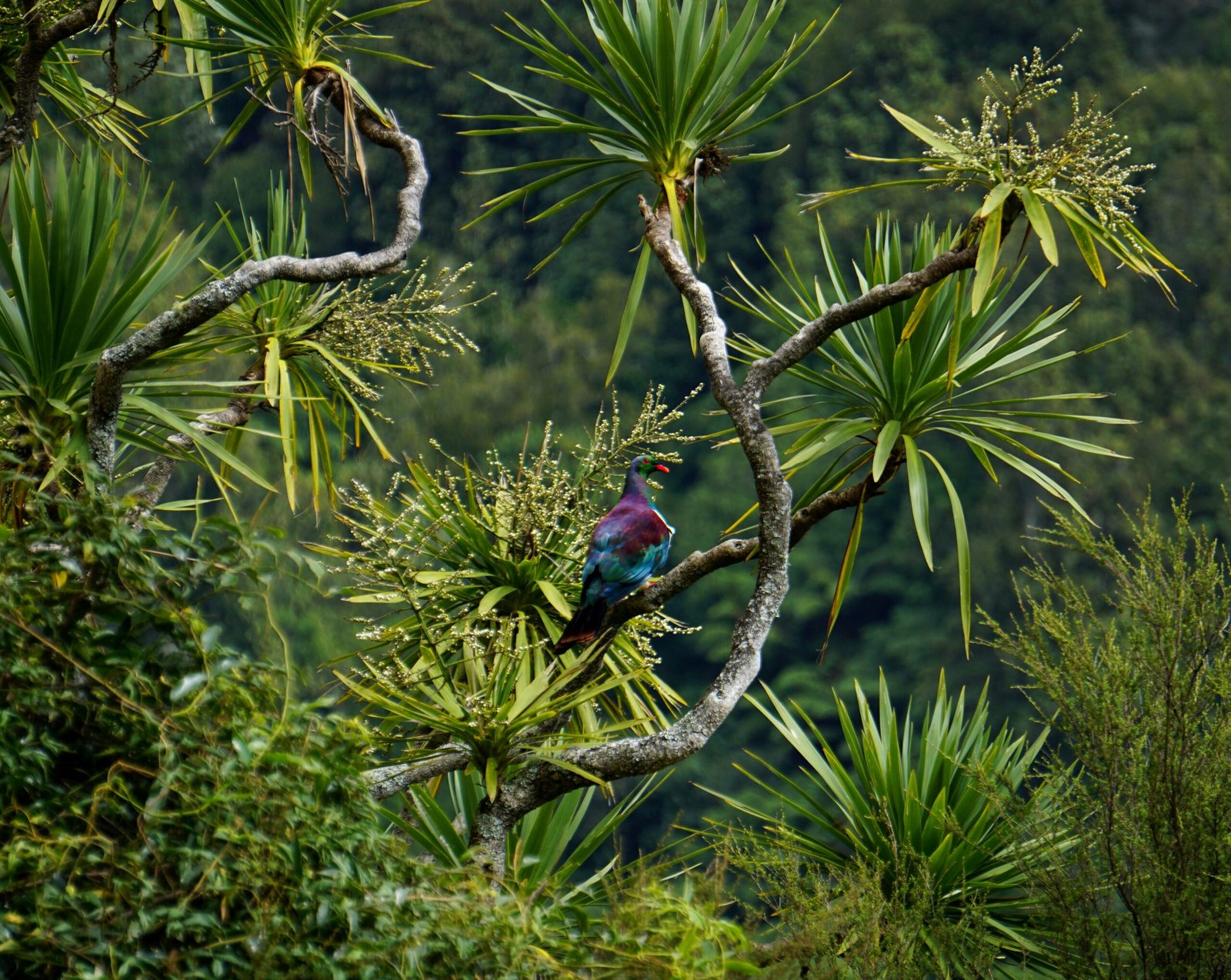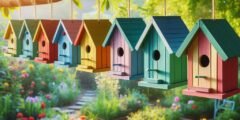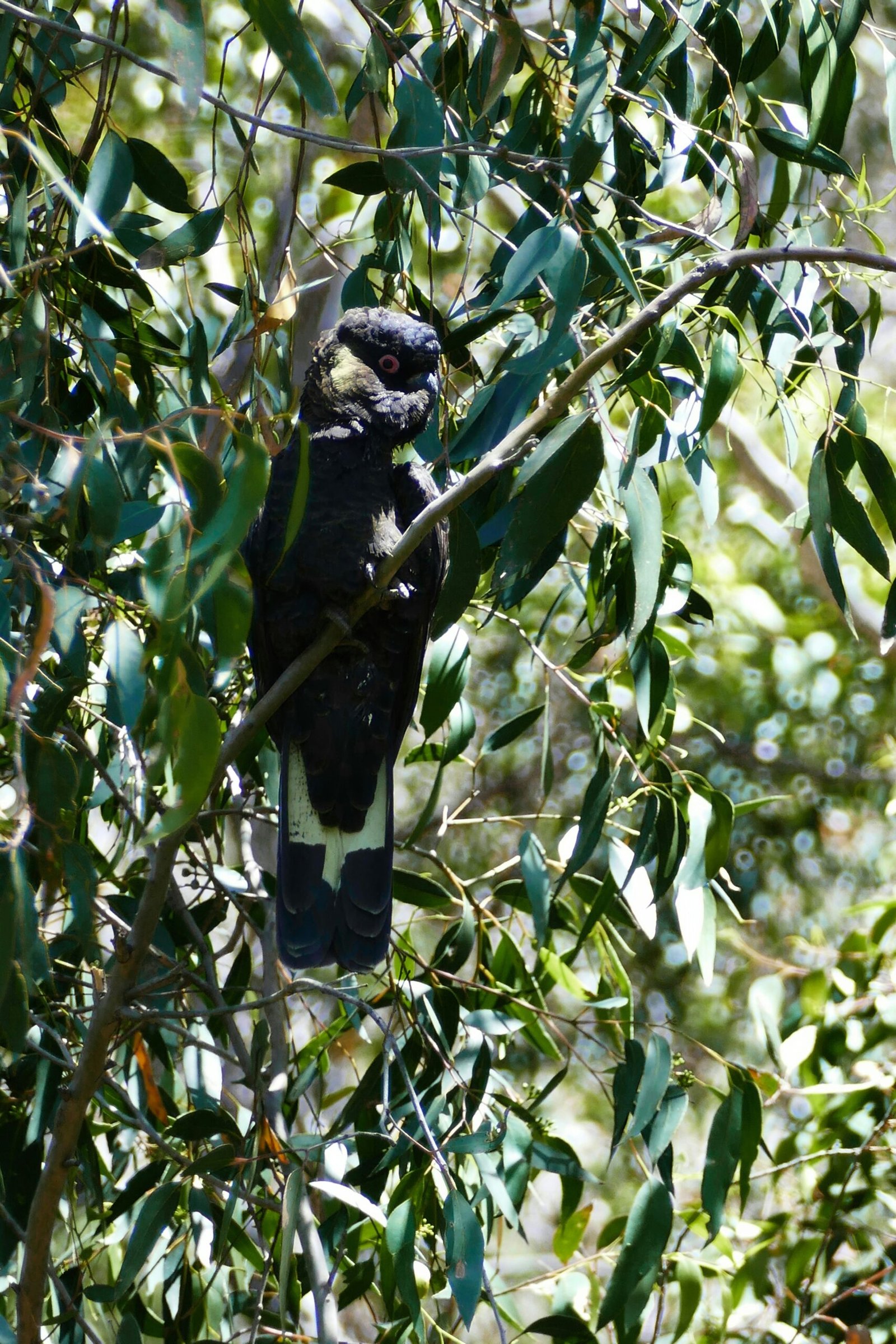Introduction
Attracting bluebirds to your yard can be a delightful and rewarding experience. These charming avians are not just a visual treat but also contribute significantly to local ecosystems by controlling insect populations. However, to successfully invite these birds to your space, it is crucial to consider where’s the best location to place a bluebird house in your yard. Proper placement is essential to ensure bluebirds feel safe and have easy access to food and shelter.
Several factors come into play when selecting the ideal spot for a bluebird house. Firstly, bluebirds prefer open areas with sparse tree cover, such as meadows or large lawns. This setting allows them to spot predators easily and provides ample foraging opportunities. Proximity to natural food sources like insects, berries, and seeds is also vital. Positioning the house 4 to 6 feet above the ground can deter ground predators and make it easier for bluebirds to access their new home.
Safety from predators is another critical consideration. Placing the bluebird house away from dense shrubbery and tall trees can help prevent ambushes by cats, raccoons, and other predatory animals. Additionally, installing predator guards or baffles on the mounting pole can offer extra protection. It is also beneficial to orient the house entrance away from prevailing winds and harsh weather conditions to provide a more comfortable nesting environment.
Lastly, ensuring the bluebird house is easily visible and accessible to the birds is important. Clear flight paths and minimal obstructions around the entrance will attract bluebirds and facilitate their nesting activities. By thoughtfully considering these factors, you can create a welcoming habitat that encourages bluebirds to make your yard their home, enriching your outdoor space with their presence.
Sun or Shade?
When considering where’s the best location to place a bluebird house in your yard, one critical factor is sunlight exposure. Bluebirds are particularly fond of homes that receive ample morning sunlight. This preference is rooted in several practical reasons. First and foremost, morning sunlight helps keep the bluebird house warm and dry, creating a conducive environment for nesting and raising young. The warmth from the early sun can be especially beneficial during the cooler months of the breeding season, providing a cozy habitat that promotes the health and well-being of the bluebird family.
To identify the best sunlit spots in your yard, start by observing the areas that receive direct sunlight in the morning. Ideally, the bluebird house should be positioned to face the east or southeast, ensuring it catches the first rays of the day. This orientation not only maximizes sunlight exposure but also helps prevent the house from overheating during the hotter afternoon hours.
Additionally, it’s essential to consider the surroundings when choosing a location. Avoid placing the bluebird house too close to large trees or structures that may cast shadows during the morning. Open spaces are generally more favorable, allowing unobstructed sunlight to reach the house. However, some partial shade later in the day can be beneficial, providing a balanced environment that protects the bluebirds from excessive heat.
By carefully selecting a site that receives ample morning sunlight, you can create an inviting and healthy habitat for bluebirds. This thoughtful placement not only supports their nesting needs but also enhances your chances of attracting these delightful birds to your yard. Remember, the key is to find a balance between sun and shade, ensuring the bluebird house is warm and dry in the mornings while offering some relief from the midday heat.
Open Skies or Crowded Yard?
When determining where’s the best location to place a bluebird house in your yard, one of the most crucial factors to consider is ensuring a clear flight path. Bluebirds are known for their graceful flight and require unobstructed access to their nesting site. An open area with minimal branches or obstacles is ideal, as it facilitates easier entry and exit for the birds, while also reducing the risk of predators lurking nearby.
A bluebird house situated in an open space not only welcomes these delightful creatures more readily but also provides a vantage point for them to spot potential threats. Dense foliage or a cluttered environment can impede their flight, making it challenging for them to reach the house and potentially deterring them from nesting there altogether. Furthermore, thick vegetation can offer cover for predators such as cats, snakes, or larger birds, posing a significant risk to the safety of the bluebirds and their young.
To create an optimal environment, consider trimming or clearing nearby vegetation. Start by assessing the area around the intended location of the bluebird house. Remove any low-hanging branches or dense shrubs that could obstruct the birds’ flight path. Aim to create a radius of at least 5 to 7 feet of open space around the house. This clearance not only provides easy access but also allows bluebirds to spot predators from a distance, giving them a better chance to evade danger.
While maintaining an open area is essential, it’s also beneficial to have some perching spots nearby, such as isolated trees or fence posts. These perches offer bluebirds a place to rest and survey their surroundings before approaching the nest. By balancing open space with strategic perching options, you create a welcoming and safe habitat for bluebirds, increasing the likelihood of them choosing your yard as their nesting site.
Ground Zero or High Up?
Determining the optimal height for mounting a bluebird house is crucial for ensuring its success. Bluebirds prefer nesting at heights that balance safety and accessibility. Ideally, placing the bluebird house at a height of 4 to 6 feet from the ground provides an excellent compromise. This height deters many ground-based predators such as snakes and raccoons, while remaining easily accessible for bluebirds. Additionally, it allows for convenient monitoring and maintenance by homeowners.
When considering where’s the best location to place a bluebird house in my yard, it is also essential to choose the appropriate mounts or poles. Sturdy metal poles are often recommended due to their durability and resistance to climbing by predators. These poles can be outfitted with baffles, which are cylindrical or conical guards that prevent predators from reaching the nest. Alternatively, treated wooden posts can be used, but they may require additional precautions like greasing to deter pests.
Another important aspect is the stability of the mount. Ensure that the pole or post is firmly anchored in the ground to withstand various weather conditions. Ground anchors or concrete bases can provide additional support and prevent tilting or toppling of the bluebird house. Adjustable mounts are also available, allowing for easy height modification if needed.
Ultimately, the location and height must also consider the surrounding environment. Placing the bluebird house in an open area, away from dense shrubbery or tall trees, reduces the risk of predation and provides an attractive nesting site for bluebirds. When choosing where’s the best location to place a bluebird house in my yard, remember that maintaining a balance between height, accessibility, and environmental suitability is key to attracting and retaining bluebirds.
Field of Dreams or Forest Fringe?
When deciding where’s the best location to place a bluebird house in your yard, it is crucial to understand the habitat preferences of these vibrant birds. Bluebirds thrive in open areas with short grass, as these environments are ideal for hunting insects—their primary food source. Such settings allow bluebirds to spot and capture their prey with ease, making them more likely to settle and raise their young nearby.
Short grass fields or open meadows provide an abundance of insects, which are essential for the diet of bluebirds, particularly during the breeding season when they need to feed their chicks. These areas offer an unobstructed line of sight for bluebirds, allowing them to detect movements on the ground quickly. Thus, maintaining an open space with minimal tall vegetation is a key factor in attracting these birds.
To create and maintain an inviting environment for bluebirds, homeowners should consider a few practical steps. Regularly mowing the lawn to keep the grass short is fundamental. It not only makes it easier for bluebirds to hunt but also helps in the growth of insect populations that bluebirds feed on. Additionally, avoiding the use of pesticides and herbicides can significantly benefit the availability of natural food sources.
Planting native grasses and wildflowers can also enhance the attractiveness of your yard to bluebirds. These plants support a healthy ecosystem by providing habitat for insects. Creating a balanced environment that caters to the needs of bluebirds can increase the chances of these delightful birds nesting in your bluebird house.
In summary, the presence of open areas with short grass is indispensable for bluebirds to thrive. These areas not only offer essential food sources but also create a conducive environment for their hunting activities. By maintaining such spaces, you can make your yard a welcoming sanctuary for bluebirds, ensuring they have the ideal conditions to flourish.
House Party or Solo Act?
When considering where’s the best location to place a bluebird house in your yard, it is crucial to understand the territorial nature of bluebirds. Unlike some other bird species that may thrive in close quarters, bluebirds prefer a more solitary environment. This preference for distance helps reduce competition and stress, allowing them to thrive and successfully raise their young.
Bluebirds are particularly sensitive to the proximity of other bird feeders or houses. To ensure optimal conditions, it is recommended to place bluebird houses at least 100 yards apart. This distance minimizes territorial disputes and provides each pair of bluebirds with a sufficient foraging area. Additionally, keeping this distance helps maintain a calm environment, which is vital during the breeding season.
When positioning a bluebird house, it is also essential to consider the placement of other bird feeders or houses in your yard. Bird feeders that attract a high volume of activity, such as those designed for finches or sparrows, should be kept at a considerable distance from bluebird houses. This separation helps avoid unnecessary stress and potential conflicts that could disrupt the bluebirds’ nesting activities.
Furthermore, ensuring that bluebird houses are not in the immediate vicinity of densely populated bird areas can significantly enhance their appeal to prospective bluebird residents. Providing an open, quiet space with minimal disturbances will encourage bluebirds to take up residence and increase the likelihood of successful nesting.
In summary, understanding the territorial behavior of bluebirds and providing ample spacing between birdhouses and feeders is essential for creating a conducive environment for these beautiful birds. By following these guidelines, you can enjoy the presence of bluebirds in your yard, while also fostering a harmonious habitat for all bird species.
When considering where to place a bluebird house in your yard, it’s essential to be mindful of the surrounding environment to avoid attracting unwanted competitors. One significant risk is placing the bluebird house too close to wooded areas or brush piles. These locations can become inviting havens for house wrens and other species, which can pose a threat to bluebirds.
House wrens, known for their aggressive nature and territorial behavior, are particularly notorious for taking over bluebird houses. They often fill the nest boxes with sticks, rendering them unusable for bluebirds. To minimize the risk of attracting house wrens, it’s advisable to position the bluebird house at least 50 to 200 feet away from dense vegetation or brush piles. This distance helps create a buffer zone, reducing the likelihood of house wrens encroaching on the bluebird’s nesting territory.
Another consideration is the proximity to other birdhouses. While bluebirds are generally not highly territorial, they do require some personal space. Placing multiple bluebird houses too close together can lead to increased competition and stress among the birds. A recommended spacing guideline is to place bluebird houses at least 100 yards apart from each other, ensuring each pair has ample room to establish their territory.
Additionally, it’s beneficial to keep a keen eye on the area surrounding the bluebird house. Regularly inspect the vicinity for any signs of potential threats, such as encroaching brush or dense thickets that might attract competitors. Maintaining a clear and open space around the bluebird house will help provide a safer and more inviting environment for the bluebirds to thrive.
By paying careful attention to these factors, you can significantly enhance the chances of bluebirds successfully nesting and raising their young in your yard. Understanding where’s the best location to place a bluebird house in your yard involves not just selecting the ideal spot but also actively managing the surrounding environment to ensure the safety and well-being of these beautiful birds.
Catwalk or Cat Trap?
When considering where’s the best location to place a bluebird house in your yard, it is crucial to prioritize the safety of these delicate birds from climbing predators like cats and raccoons. Bluebirds are vulnerable to such predators, which can easily scale trees and posts to reach their nests. Therefore, strategic placement and additional protective measures are essential to ensure the bluebirds’ safety.
One effective method to safeguard bluebird houses is to install them on poles equipped with predator guards. These guards, typically made of metal or PVC, create a physical barrier that prevents predators from climbing up to the nest. A baffle, which is a cone-shaped or cylindrical device, can be affixed to the pole below the bluebird house to further deter any attempts by predators to reach the nest.
Additionally, selecting an appropriate location within your yard can play a significant role in naturally deterring predators. Positioning the bluebird house away from dense tree cover or shrubbery reduces the likelihood of predators using these natural structures as launch points to access the house. Open spaces with short grass or minimal ground cover can serve as effective deterrents, as they limit the hiding spots for predators and give bluebirds a better chance to spot and avoid threats.
Height is another crucial factor to consider. Mounting the bluebird house at least 6 to 10 feet above the ground can make it more challenging for climbing predators to reach the nest. This elevation, coupled with a predator guard, significantly enhances the safety of bluebird houses from common yard predators.
By combining thoughtful placement with practical protective measures, you can create a safer environment for bluebirds to thrive in your yard. Understanding the behavior and capabilities of potential predators allows you to make informed decisions about where’s the best location to place a bluebird house, ensuring these beautiful birds can nest and raise their young without undue risk.
Peace and Quiet or Constant Buzz?
When considering where’s the best location to place a bluebird house in your yard, one critical factor is the level of noise and activity in the chosen area. Bluebirds are naturally inclined to prefer serene environments, far from the hustle and bustle of human activity. High foot traffic areas or sections of your yard that see constant movement can deter these delicate birds from nesting. Therefore, it’s essential to select a tranquil spot where bluebirds can feel secure and undisturbed.
The presence of tranquility is paramount for bluebirds. When they find a peaceful habitat, their chances of nesting successfully increase significantly. Quiet areas offer fewer disturbances, allowing bluebirds to focus on building their nests, laying eggs, and raising their young. The absence of loud noises and frequent human activity reduces stress for these birds, fostering a more conducive environment for their natural behaviors.
Additionally, consider the proximity to busy parts of your yard. Avoid placing the bluebird house near playgrounds, patios, or areas where pets frequently roam. Instead, opt for locations with minimal human interaction, such as the far corners of your yard, near tree lines, or in a secluded garden area. These spots can provide the serenity that bluebirds need to thrive.
Incorporating natural elements like bushes or shrubs around the bluebird house can also contribute to a sense of security. These elements can act as natural buffers, shielding the house from noise and activity while providing the birds with a more natural and inviting habitat. By ensuring that the bluebird house is situated in a quiet, low-traffic area, you can greatly enhance the likelihood of attracting and supporting a healthy bluebird population in your yard.
Your View or Bluebird Bliss?
One of the primary considerations when determining where’s the best location to place a bluebird house in your yard is balancing convenience for monitoring with creating an optimal environment for the bluebirds. While it might be tempting to place the bluebird house in a spot that offers you the best view from your window, it is important to prioritize the needs of the bluebirds to ensure they feel safe and secure.
Bluebirds prefer open areas with low grass and minimal shrubbery, as these conditions closely mimic their natural habitats. Placing the bluebird house in such a location will significantly increase the chances of attracting them. Ideally, the house should be mounted on a pole or a post, around 4 to 6 feet off the ground, with the entrance hole facing away from prevailing winds. This setup not only provides the bluebirds with a sense of safety but also makes it easier for them to spot potential predators.
Monitoring the bluebird house regularly is crucial for ensuring the birds’ well-being and maintaining the house in good condition. To facilitate this, select a location that is accessible yet still suits the bluebirds’ preferences. Placing the house too close to human activity can deter bluebirds, so it is essential to find a balance. A spot that allows for easy access for maintenance while still being relatively secluded can serve both purposes effectively.
While it may not always be possible to have the bluebird house within direct view from your favorite window, prioritizing the bluebirds’ habitat needs will ultimately lead to a more successful and rewarding experience. By considering both the convenience of monitoring and the optimal environment for bluebirds, you can create a harmonious space that benefits both you and your feathered visitors.
FAQs
When considering where’s the best location to place a bluebird house in my yard, several common questions arise. Below are some frequently asked questions and their answers to help ensure a successful and safe environment for bluebirds.
How do I maintain a bluebird house?
Regular maintenance is crucial for the well-being of bluebirds. It’s advisable to clean the house at least once a year, ideally after the nesting season. Remove old nests and debris to prevent disease and parasites. Check for any damage to the structure and repair it promptly. Ensuring the house remains in good condition can increase its attractiveness to bluebirds.
Should I consider seasonal placement?
Yes, the timing of placement is important. Install the bluebird house in late winter or early spring before the birds begin scouting for nesting sites. This gives bluebirds ample time to discover and settle into the new house. Additionally, consider removing the house during extreme weather conditions if it’s not in use, to prolong its lifespan.
How can I protect the bluebird house from predators?
Predator control is essential for the safety of nesting bluebirds. To deter predators, mount the house on a pole equipped with a predator guard. Avoid placing the house too close to trees or fences that could provide easy access for climbing predators. Additionally, regularly inspect the area for signs of predatory activity and take appropriate measures as needed.
These actionable tips aim to address the common concerns regarding the placement and maintenance of bluebird houses. By following these guidelines, you can provide a safe and welcoming environment for bluebirds in your yard.
Conclusion
In conclusion, determining where to place a bluebird house in your yard involves careful consideration of several key factors. By choosing an open area with ample sunlight, you provide bluebirds with the optimal environment for nesting. Ensuring the house is mounted at the correct height, typically between 4 to 6 feet above the ground, helps protect the birds from predators and harsh weather conditions. Additionally, orienting the entrance hole away from prevailing winds and towards a tree or shrub for cover will offer further protection and a sense of security for the bluebirds.
Another crucial aspect is the placement of the bluebird house away from areas with high human activity and potential disturbances. This allows the birds to nest peacefully and increases the likelihood of a successful breeding season. Regular monitoring and maintenance, including cleaning the house after each nesting season, are essential practices to keep the bluebird house in optimal condition and attractive to these delicate creatures.
By following these guidelines, you can create a welcoming and safe environment for bluebirds in your yard. Proper placement not only supports the bluebirds’ nesting needs but also enhances your opportunity to observe and enjoy these beautiful birds up close. Remember, the right location is pivotal for attracting bluebirds and ensuring their ongoing health and safety. With thoughtful planning and consistent care, your yard can become a thriving habitat that supports bluebird populations for years to come.
When determining where’s the best location to place a bluebird house in your yard, it is beneficial to explore additional resources that can offer further insights and detailed information. Below, we have compiled a list of 10 valuable external and internal links from the website Taqaddam Tech to help you make an informed decision.
External and Internal Links
- Bluebird House Placement Tips: This article provides comprehensive guidelines on selecting the optimal location in your yard to attract bluebirds.
- Understanding Bluebird Behavior: Learn about the habits and preferences of bluebirds, crucial for deciding where to place their house.
- Guide to Birdhouse Materials: Discover the best materials to use for constructing a durable and attractive bluebird house.
- Seasonal Bluebird Care: This guide offers tips on how to care for bluebirds throughout the different seasons, ensuring their safety and comfort.
- Predator Proofing Your Birdhouse: Learn strategies to protect bluebirds from common predators, ensuring their house remains a safe haven.
- Selecting the Right Birdhouse Design: Explore various birdhouse designs and choose one that meets the specific needs of bluebirds.
- Landscaping for Bluebirds: Understand how to create an inviting environment in your yard that attracts bluebirds and other beneficial wildlife.
- Monitoring Your Bluebird House: Tips on how to effectively monitor and maintain the bluebird house, ensuring it remains in good condition.
- Bluebird Feeding Guide: Learn about the best food sources to attract and nourish bluebirds in your yard.
- Community Bluebird Projects: Get involved with community initiatives aimed at supporting bluebird populations and their habitats.
These resources will provide a wealth of information to ensure you create the perfect environment for bluebirds in your yard. By following expert advice and understanding the specific needs of these beautiful birds, you can enjoy their presence and contribute to their conservation.









